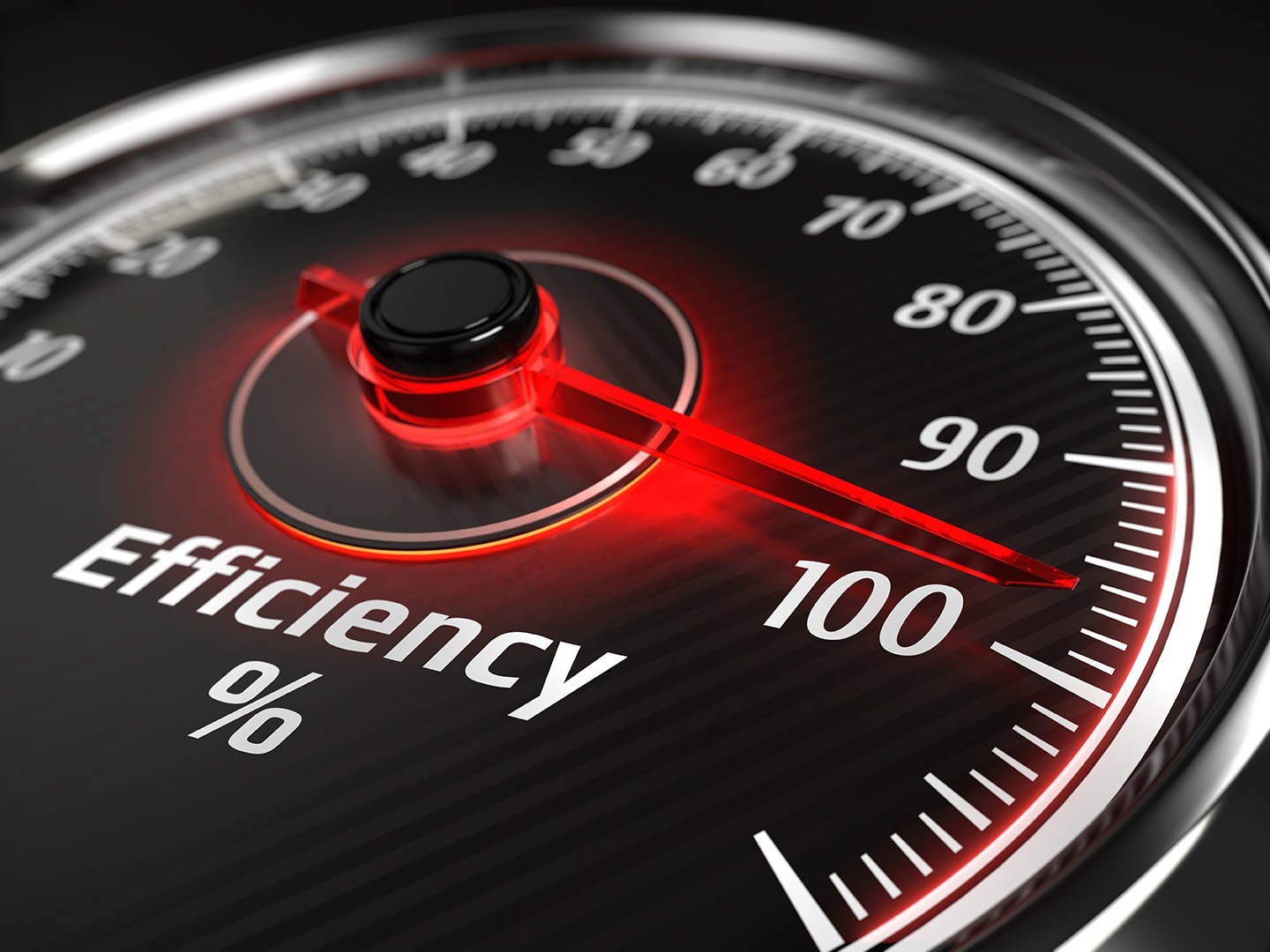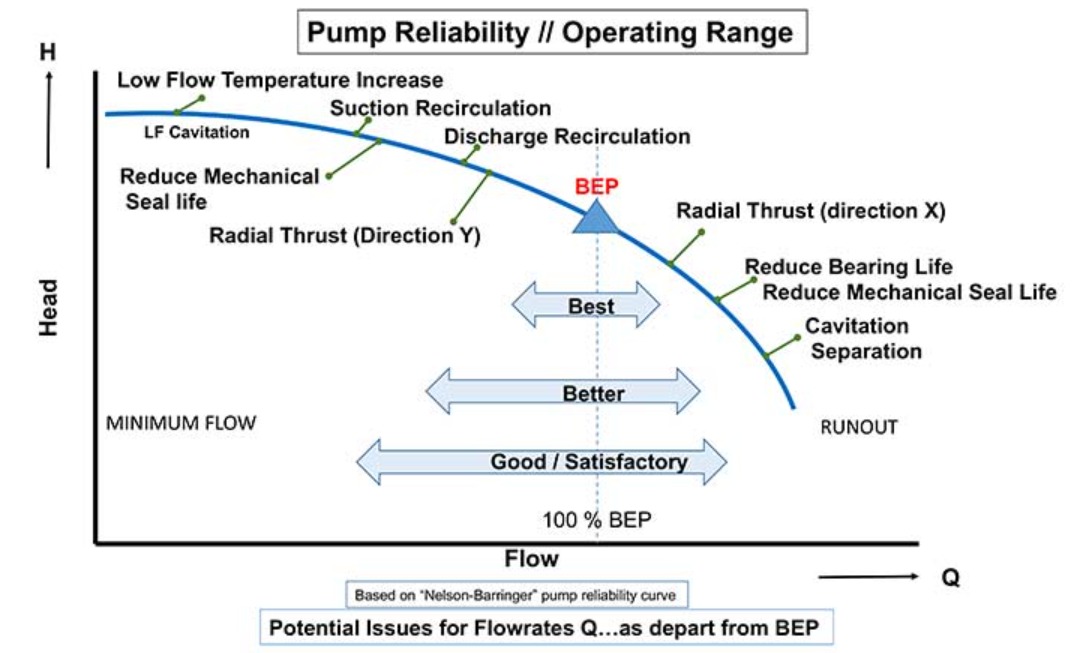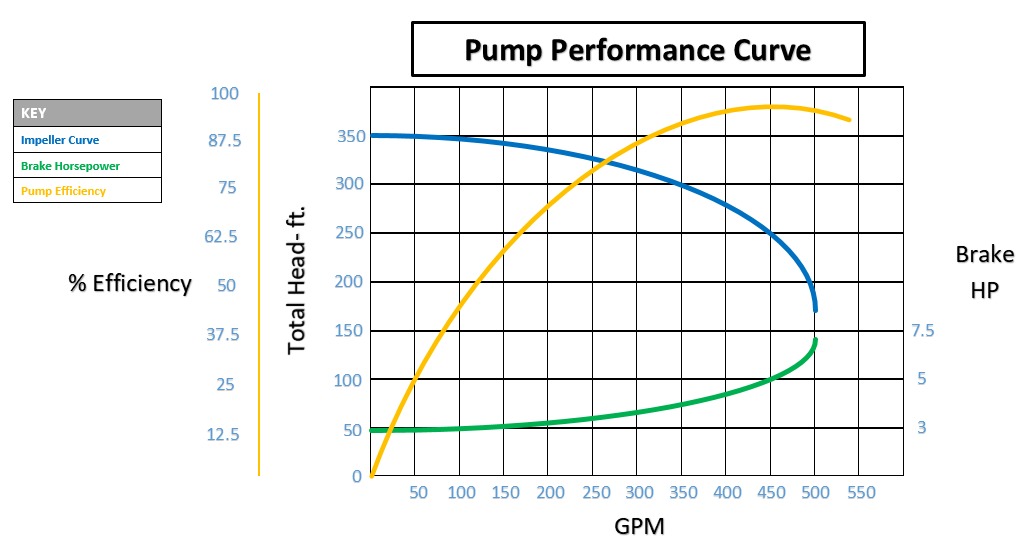
How to Get Your Pump Running at its Best Efficiency Point
Assessing your pump's performance after years of system changes.
Article written by FCX Performance, Inc
It is likely that your plant’s operating system has changed over the years. Often times, we modify our pumps and other equipment to keep up with the system changes. Other times, our equipment can meet the new demands and thus go unaltered. After years of system changes, you may notice your pump not running at its best efficiency point, or BEP. Let’s explore how we calculate a pump’s performance and what our options are for getting it back to its optimal efficiency:
How Do I Calculate My Pumps Performance?
To understand if your pump is running at its best efficiency, you need to compare your pump’s actual performance of the installed operating conditions as it’s functioning today to its performance curve. To do that, we calculate the system curve (what the user’s system actually requires in pressure at any given flow rate) and compare that to the installed pump’s performance curve (created and published by each pump’s manufacturer) to make sure it’s operating at its best efficiency point. In practice, when installing a new pump, you use the system curve to select the correct pump that meets your systems requirements. Then, record actual flow and pressure and replot those points on the pump's performance curve. This shows you where your pump is actually operating versus its best efficiency point.

How Your Pump is Performing on the Curve
The image above is a typical pump curve showing potential mechanical failures that can occur when the pump operates outside of this +/- 10% operating range. The best efficiency point is where the pump curve intersects your system curve/system requirements. The life expectancy of the pump and or its components will decrease for various reasons when you’re operating outside of this +/- 10% BEP operating range.

Ensure Your Pump Operates at its Best Efficiency Point
Once the system requirements have been plotted on the pump’s performance curve, there are multiple ways to ensure that your pump is operating at its best efficiency point.
Install a New Impeller
Pumps have a range of impeller diameters, giving you the option to trim your impeller to the size you need. Each trim meets a completely different operating condition. Therefore, you might need a different impeller trim or a new impeller to meet your system requirements.
Install a Variable Frequency Drive
Install a variable frequency drive to control the speed of the motor, which, in turn, controls the pump speed to meet the actual system requirements.
Add a Control Valve Downstream
A control valve downstream of the pump can modulate the output to meet the actual system requirements. A control valve may also be a solution to modulate the flow to keep your pump operating at its best efficiency point when the flow requirements change.
Install a New Pump
After confirming where your existing pump is operating on its curve, you may find that a completely different pump is required.
Take the time to learn where your pump is on its performance curve. You’ll be able to better manage your equipment and ensure better life expectancy for the pump and pump components.
Talk With an ExpertNeed advice on what to do if your pump’s not at its BEP? Contact us today and get connected with a pump expert! |


